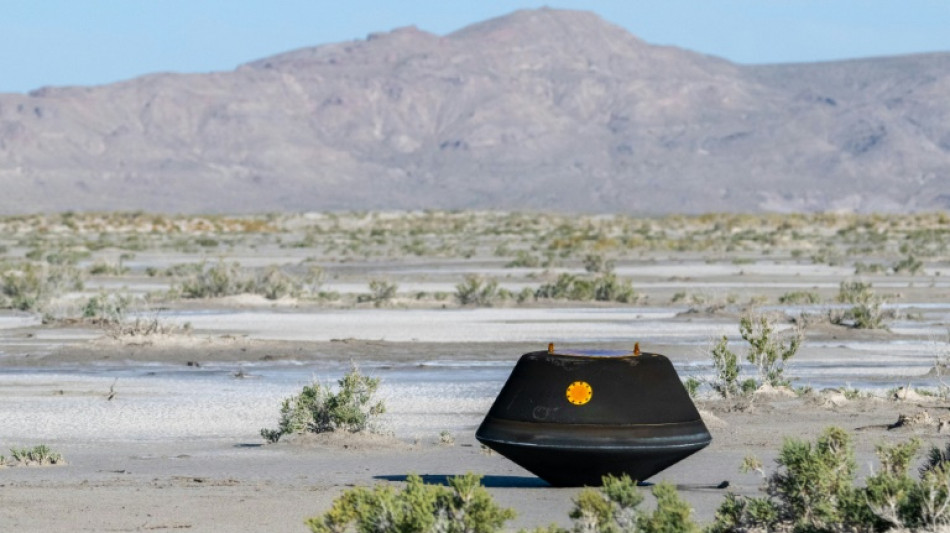
SCS
0.0100


After a seven-year wait, NASA scientists on Tuesday finally pried open a space probe carrying the largest asteroid samples ever brought back to Earth, finding black debris.
Researchers "found black dust and debris on the avionics deck of the Osiris-Rex science canister when the initial lid was removed today," the US space agency said, though without specifying whether they definitely belonged to the asteroid.
Scientists are eagerly awaiting researching the bulk of the sample, which will require "intricate disassembly" of the probe.
Osiris-Rex launched in 2016, landing on the asteroid Bennu and collected roughly nine ounces (250 grams) of dust from its rocky surface.
Even that small amount, NASA has said, should "help us better understand the types of asteroids that could threaten Earth."
It ended its 3.86-billion-mile (6.21-billion-kilometer) journey after touching down in the desert in the western state of Utah on Sunday, following a high-stakes, fiery descent through Earth's atmosphere.
The residue on the avionics deck found Tuesday was likely a result of issues during the collection, which NASA said were eventually solved, allowing the secure transfer of the sample.
The lid was opened in an airtight chamber at the Johnson Space Center in Houston, Texas.
A news conference is scheduled October 11 in which the bulk of the sample will be revealed to the public.
The analysis of the asteroid, scientists believe, will help researchers better understand the formation of the solar system and how Earth became habitable.
Most of the sample will be conserved for study by future generations. Roughly one-fourth will be immediately used in experiments, and a small amount will be sent to mission partners Japan and Canada.
Y.Su--ThChM